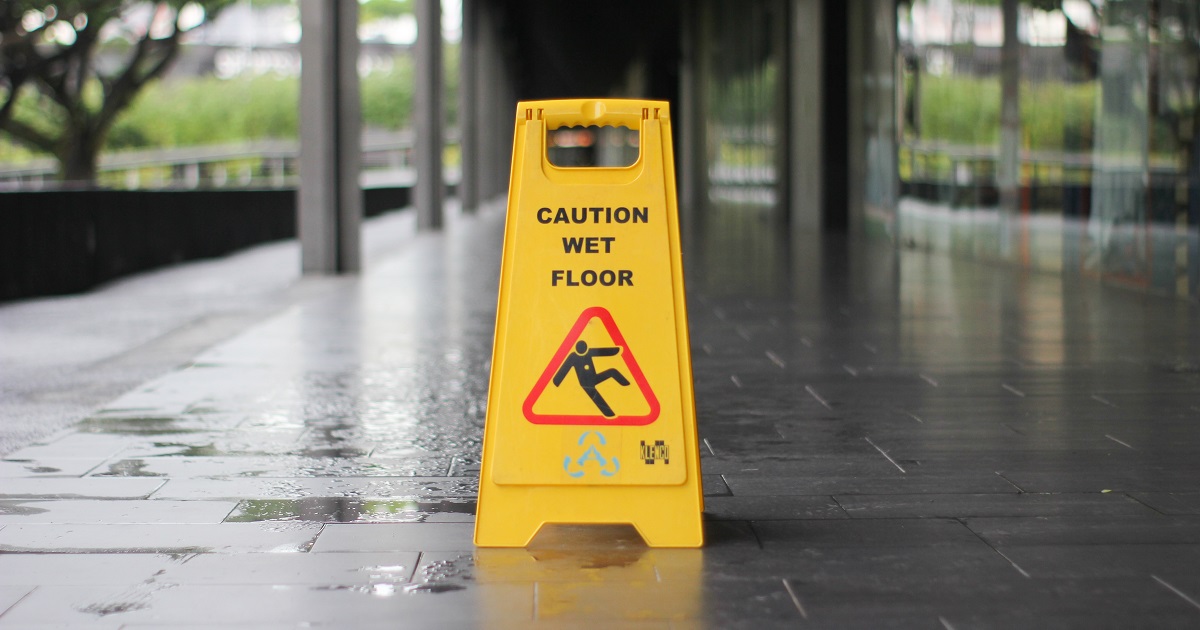For Media Inquiries
Contact Revee White, Director of Marketing and Communications at rwhite1@mem-ins.com or 573.499.4190.
Slips, trips and falls are some of the leading causes of workplace injuries year after year. At MEM, about one in four lost-time claims is due to this type of injury. Slip hazards might not seem like the most significant risk, but they can lead to more serious injuries than you think, including fractures, dislocations and sprains.
Slip on the job leads to shoulder injury
Earlier this year, an employee of an MEM policyholder was climbing down from the back of a tractor trailer. His foot slipped and he fell to the ground, landing on his side. He suffered a shoulder injury. Since he was on the road when the incident occurred, he had to return to his home state for treatment.
This employee had surgery and due to his age, may have challenges with recovery and pain management. The estimated cost of the work comp claim is more than $100,000 in medical costs and indemnity. It could have a significant impact on the policyholder’s e-mod and, in turn, their premium.

Four steps to navigate common slip hazards
What’s the difference between a slip and a trip? A slip is caused by a loss of friction between your footwear and the floor. A trip is caused by a physical obstacle – like the edge of a rug or a cracked sidewalk – that prevents you from completing your step.
Injuries due to slips usually aren’t as severe as others in this category – for example, falls from heights. However, they are very common and often easily preventable. Share these four tips with your employees to prevent slips on the job:
1. Take extra care on slippery surfaces
Surfaces covered in snow, ice, liquid or grease pose significant slip risks. Identify the risks you face in your job:
- During winter months, walk carefully on snowy or icy surfaces.
- Clean up spills immediately and fix leaks as soon as possible. In the meantime, mark the wet floor with a cone or signage to alert other employees of the hazard.
- Regularly clean greasy kitchen floors. Consider providing slip-resistant footwear or installing non-slip flooring to protect employees working in a kitchen.
2. Use three points of contact entering and exiting vehicles
It’s a routine task that many employees do several times a day. But climbing in and out of machine cabs can put operators at risk. Maintain three-point contact: Of your four limbs (two hands and two feet), three of them should always be in contact with the vehicle or ladder you’re climbing. Always enter and exit machinery facing the cab.
3. Always wear proper footwear
It’s simple, but proper footwear is often overlooked as an inexpensive yet important safety tool. Wear shoes designed to provide traction on slippery surfaces. When working in ice or snow, slip-on cleats might be an even better choice.
4. Slow down and pay attention
Many slip incidents happen because someone was in a hurry or simply not paying attention to where they were going. Be deliberate about walking through areas of your workplace that could harbor slip hazards. Slow down – running or moving too quickly might save you a few seconds, but it’s not worth the risk.
Prevent slips in your workplace
A slip at work might seem trivial, but this example shows that it can lead to serious injuries. You can prevent most slips by managing slippery surfaces, ensuring employees have proper footwear, and encouraging your team to pay attention to their surroundings.
Ready to get started? Share this free Slip Prevention Tool Box Talk with your employees. >